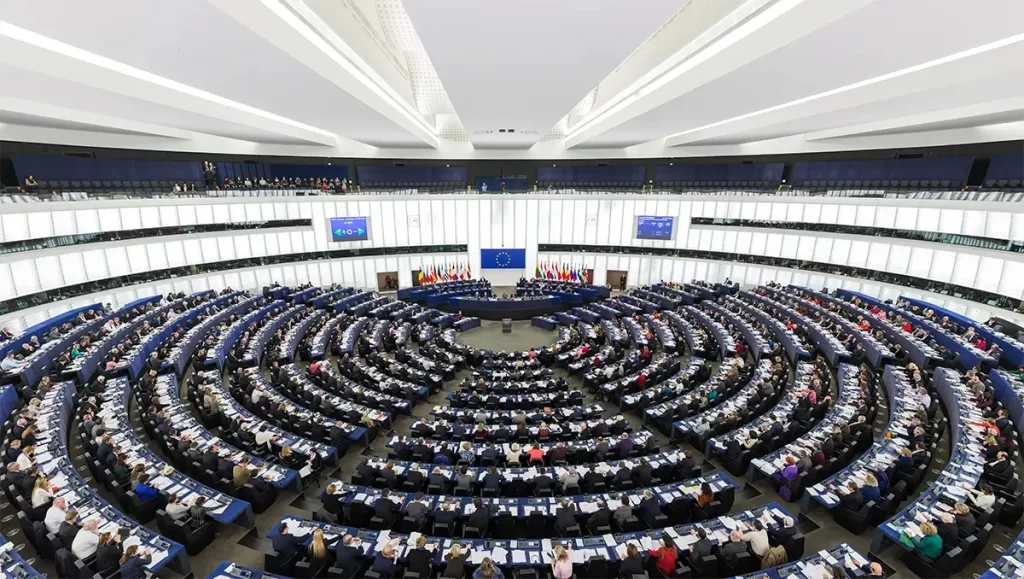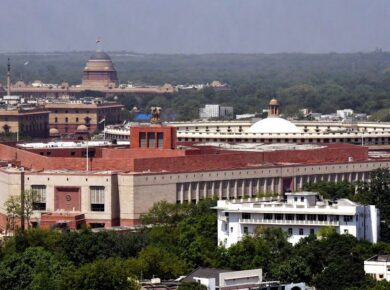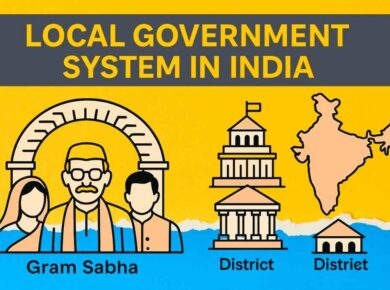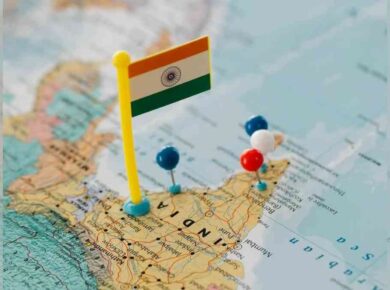Working Procedure of Parliament
Sessions of Parliament
President summons each house of the parliament at such intervals that there should be not more than 6 months of gap b/w 2 sessions of the parliament, Hence the parliament must meet atleast twice a year.
Powers to dissolution or prorogation are exercised by the President but power of adjournment belongs to respective presiding officer. Time between prorogation & Re-assembly is called Recess.
| Budget Session | Feb – May | Longest |
| Monsoon Session | July – August | |
| Winter Session | Nov – Dec | Shortest |
| Special session | Convened by President on request of COMs | |
- If LS is not in session, not less than 1/10th of the members, on prior notice of 14 days, can write to President for revoking national emergency.
Private member’s business
- Every member who is not a minister is called a private member.
- Private member’s business include private member’s bill & resolutions
- Period of notice for introduction of bill is one month, unless presiding officer allows introduction at shorter notice
- Period of notice for resolution is 2 days.
Advertisement: World’s fastest hosting – secure, reliable, limited-time offer! Click now!
Question hour (11AM – 12)
- 1st hour of business
- Keep Ministers accountable for gov. & keep them on toes
Starred questions
- Starred questions are one of whom a member desires an oral answer.
- Answer to such question may be followed by 5 supplementary questions by other members
Unstarred questions
- Unstarred questions are one of whom written answer is desired by the member.
- No supplementary questions can be asked there on
- Requires a time period of 10 days.
Short notice questions
- Relates to matter of urgent public importance
- Can be asked by members with notice shorter than 10 days as prescribed for an ordinary question.
- It is for the speaker to decide whether matter is of real public importance or not.
- Member requires to state reasons for asking such questions while serving the notice
Zero Hour (12 – 1 PM)
- Not recognized under the rules & procedures of house of the parliament.
- A member raises any issue of public importance on very short notice or without noticat all.
Motions in Parliament
- Basically, a proposal brought before the house for expressing the opinion to the house.
- Every question put in the house must, therefore, be proposed by a member as a motion.
- Hence, motions are basically parliamentary proceedings.
Resolutions in Parliament
- Procedural device available to members & ministers to raise a discussion in the house on matter of general public interest.
- A resolution is infact a substantive motion but unlike motions, resolution forms have been provided with the rules concerning both the houses.
- If resolution is passed in form of statute / law, it has the binding effect. But, if it is passed as an expression of opinion, it has only persuasive effect.
- Hence, resolution is a particular type of motion, required to be voted upon, unlike as in case of motion.
Types of Motions in Parliament
Privilege Motion
- Moved by a member, if in his opinion, any minister/ any member commits a breach of privilege of the house by withholding any fact or by giving distorted version of facts
Adjournment Motion (only in LS)
- Setting aside normal business of the house for discussing a matter of urgent public importance
Calling attention motion (Only in LS)
- A member with prior permission of the speaker, calls the attention of ministries on matter of urgent public importance
- He may make a brief statement or ask for the time to make a statement at later hour or date (Indian innovation)
Censure Motion (Only in LS)
- This motion is moved by opposition parties against whole COMs or against any individual minister for failure to act / seeking disapproval of their policy
- Speaker has to decide its order & fix a date for discussion of this motion & if it is passed in LS, Gov. need not to resign, but COM is bound to seek confidence of LS as early as possible
- If a money bill or vote of thanks to President (in joint session of parliament) is defeated, it also amounts to censure of the government policy & gov. needs to seek confidence of LS as early as possible
No confidence Motion (Only in LS)
- COMs remain in office as long as it enjoys majority support or confidence of LS
- Once, it loses the confidence of the house, it is bound to resign with immediate effect
- Moved against only COMs, not against any individual member (unlike censure motion)
- Further unlike censure motion, no date is fixed, or any time allotted to COMs as this motion takes precedence over all pending businesses of the house
Confidence Motion (Only in LS)
- Came into existence under Indian parliamentary practice mainly due to formation of coalition governments.
- Process is similar to no confidence motion except it is moved by the gov. itself to prove & ensure confidence of LS
- If this motion is defeated, COMs is bound to resign
Cut Motions (Only in LS)
Cut motions are basically part of budgetary process which seeks to reduce the amount for grants
| Policy Cut | Implies that mover disapproves of the policy underlying the demand – “the amount of demand to be reduced by Rs. 1 |
| Economy Cut | When demand or policy affects economy in expenditure – “the amount of demand to be reduced by Rs …” |
| Token Cut | Seeks the “Demand to be cut by Rs. 100” to voice a particular grievance against the government |
Whips in Parliament
- Directives issued by chief functionary of a political party in parliament to ensure support of its members, voting in favour or against a particular issue on the floor of the house.
- A person may loose membership of the party & the legislature if he votes against the whips or abstain from voting.
Speaker Protem
- Usually, senior most member in terms of years one has served & then age.
- As soon as new LS is constituted, President appoints a speaker protem to administer the oath of newly elected LS members & to preside over election of next speaker
- Ceases to be speaker as soon as new speaker is elected.
If you’re passionate about building a successful blogging website, check out this helpful guide at Coding Tag – How to Start a Successful Blog. It offers practical steps and expert tips to kickstart your blogging journey!
For dedicated UPSC exam preparation, we highly recommend visiting www.iasmania.com. It offers well-structured resources, current affairs, and subject-wise notes tailored specifically for aspirants. Start your journey today!








1 comment
Correction: In policy cut motion the amount of demand is reduced “to” Rs.1 and not “by”. Meaning the policy is disapproved and only rupee 1 is sanctioned to it showing the disapproval.